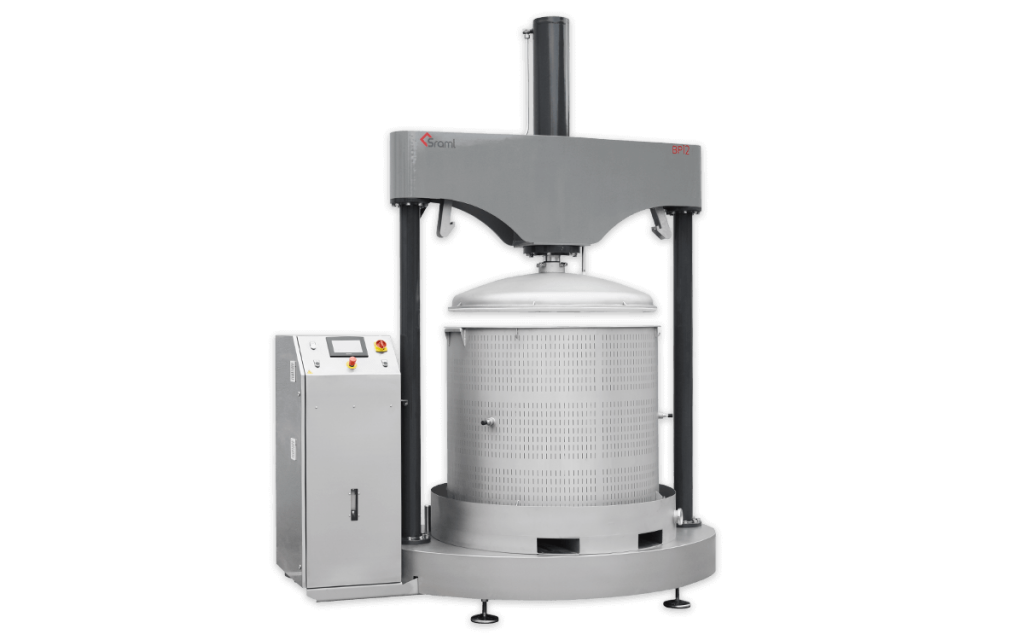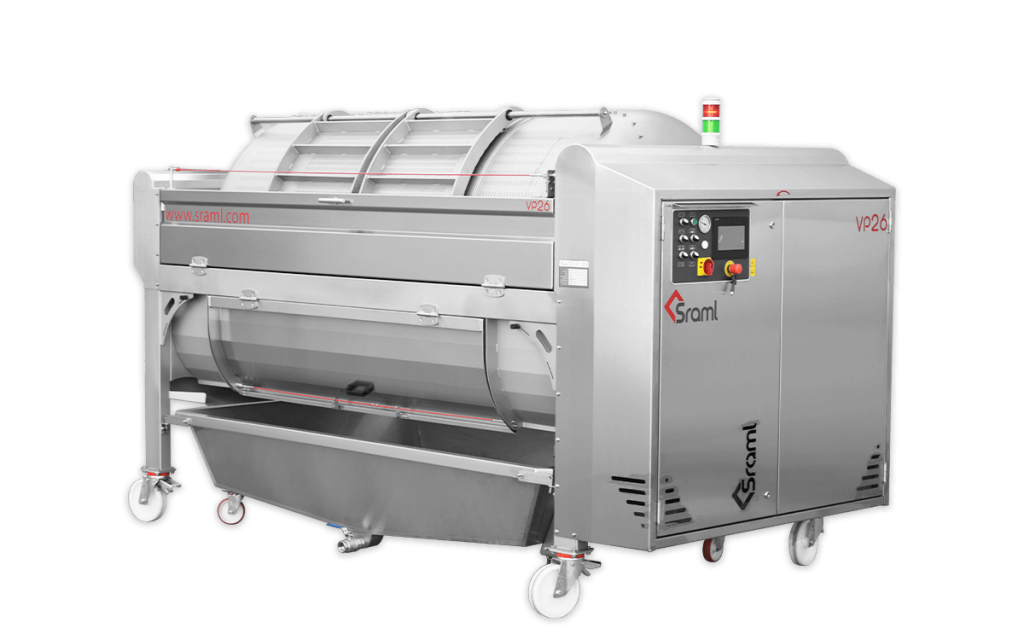The History of the Wine Press
Since there was wine there were wine presses, well at least some kind of objects that were used to squeeze the juice out of the grapes.
The oldest known wine-making site is 6000 years old. Wine presses were depicted on the walls of Egyptian tombs, talked about by Ancient Roman historians, and even found their way into the Bible.
Thousands of years ago people just used their hands and feet to crush the grapes and squeeze out the juice. But humans are innovative beings and wanted to achieve a better quality of the wine.
We know that the ancient Egyptians were already using special sacks. And first written accounts of mechanical presses come from the ancient Romans. The forefather of the modern-day press was first used in the Middle Ages.
The first wine press in form of human feet
Hands and feet were the “first wine presses”. This was probably about 7000 and 5000 BC, somewhere between the Black and Caspian sea, where wine probably originates from. The oldest known wine press dates to about 4000 BC, it was found in nowadays Armenia.
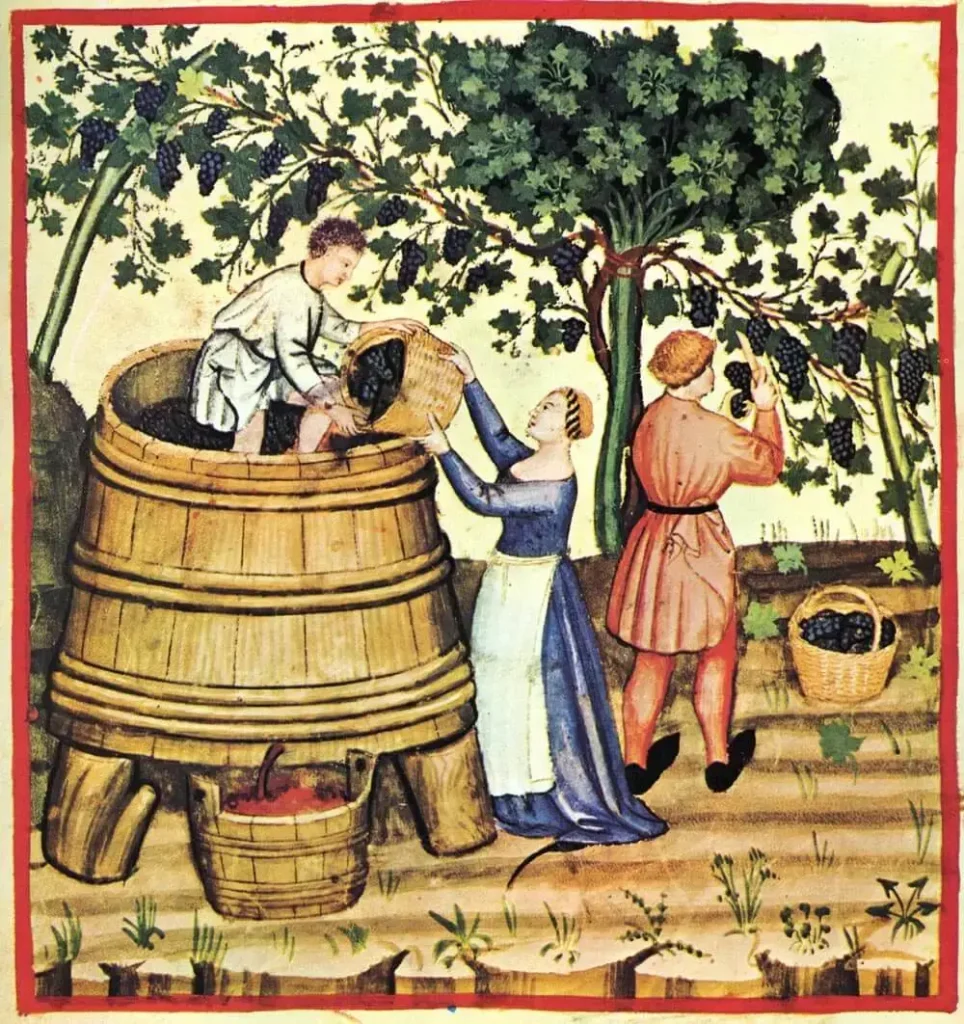
They would’ve used a hollowed piece of wood, where they would put in the grapes, crush them with their feet and hands, and later on scoop everything out into a container where it would ferment into wine. Manually crushed grapes resulted in a pale and lighter wine, spoilage was hard to prevent.
The invention of the sack press
Ancient Egyptians were known for their love of wine. They had a booming wine industry and wine played an important part in their ceremonies. So there is no wonder they started to innovate the wine press.
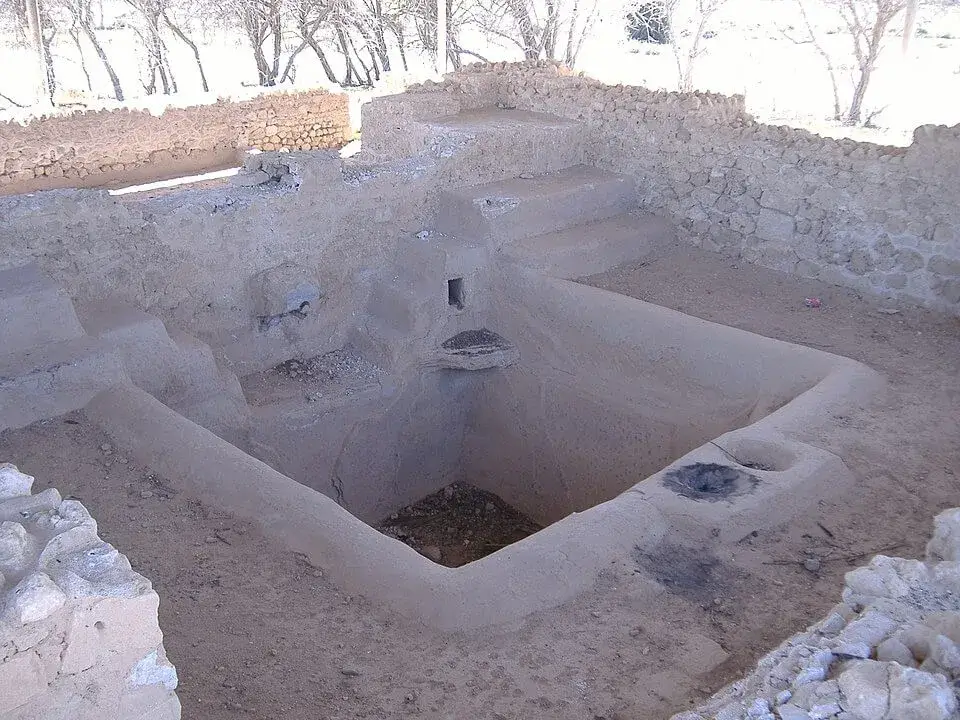
They were still using their feet, but after 1500 BC in the 18th dynasty, they invented the so-called sack press. They would put the grapes in the sack, which was hung between poles, workers would then walk in opposite directions and squeeze the grapes inside the sack. The juice would then flow out of the bottom of the bag.
This wasn’t just an evolution of the wine press, but also a way to filter the wine.
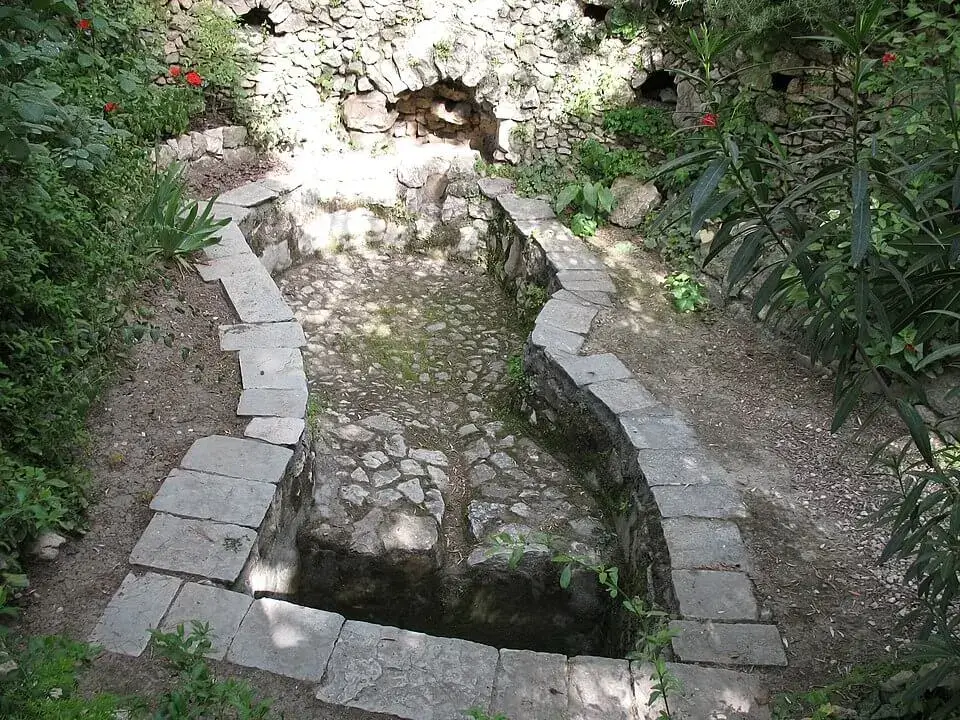
Ancient Greeks and Romans got more technical
On the other side of the Mediterranean sea Greeks were not far behind in the evolution of viticulture. The oldest wine press was discovered on the island of Crete and it’s from the Mycenaean period (1600-1100 BC).
Winemaking found its way around the Mediterranean
Greeks were known traders and colonists throughout the Mediterranean area and with them also came to the knowledge of winemaking.
When the time for wine crushing came they would put the grapes inside a basket, that was placed inside a vessel. Wine workers would hold onto a rope and crush the grapes with their feet, sometimes to the festive melodies of a flute.
Presses made out of concrete and wood
The ancient Romans built on the knowledge of the Greeks and developed a more technical wine press.
Roman historian Cato the Elder wrote about beam presses in the 2nd century BC. They are large wine presses made out of concrete, wood, and windlasses. They would crush the grapes between beams with the help of the windlass and the juice would then flow into the concrete basin.
A couple of hundred years later In the 1st century AD Pliny the Elder mentioned Greek-style presses, where windlasses were replaced by vertical screws that had a counterweight that increased the pressure. This is seen as the predecessor of the modern basket press.
Technological advancement for the rich Romans
Even with the development of technology and winemaking techniques, these kinds of wine presses were reserved for the wealthy ones and were rare. More common were still large basins, where they would crush the grapes with their feet or paddles.
Even though wine presses became more technical they still lacked some kind of control for pressing and crushing the grapes. This was mainly the problem because of the uncontrolled pressure you couldn’t control the release of the tannins, which lead to more bitter wines that were darker in color. On the other hand, pressing too gently meant that the wine lacked flavor and complexity.

Dark ages brought upon the forefather of the wine press
During the Middle ages, advancements in the winemaking process became a principal activity for religious orders. And their invention was the basket press, which is known as the forefather of the modern wine press. Presses were in use mostly in France, Germany, Spain, and Italy.
Basket presses were cylindrical baskets, that were made out of wood, bound together by rings made out of metal or wood. On the top of it, there was a disc, which pressed the juice out of the grapes beneath it. They would usually use a lever or a screw to put pressure on the disc. The juice would then run out into a vessel.
Better technology for better wine
The new invention meant that winemakers got out of their crop about 20 % more than if the grapes were crushed by hand and feet, which was still a popular and affordable method.
At that time they usually had two qualities of grape juice and therefore wine. The first was the vin de goutte, the high-quality juice that ran out just by the mere pressure of grapes stacked into the press, this resulted in a clearer and lighter wine. The second quality was then the vin de presse, the juice that ran out by pressing the grapes manually.
The basket press from the Middle Ages was the base for all the wine presses to come. Also, most of the vinification techniques based on different types of pressed juice came from it.
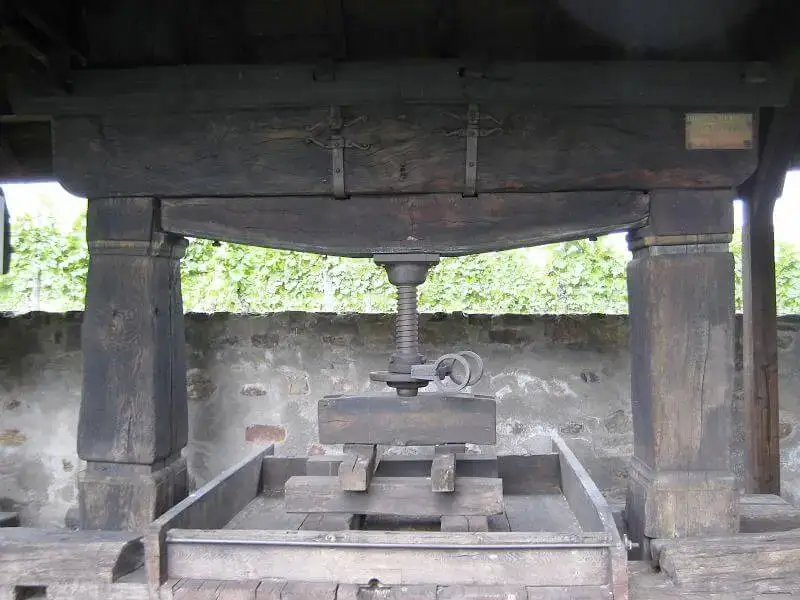
Wine presses in other parts of the world
Even if winemaking is seen as a European tradition and France is the world capital of great wines, this intoxicating drink was made almost all over the world. So, how was wine pressed in other parts of the globe?
Traders were the ones to thank, that the vine found its way all over the world. Chinese started to grow grapes in the Han Dynasty (206 BC – 220 AD), but still relied mostly on grains to make wine. In later centuries grape wine became more popular and they developed a press made out of bamboo. You place the grapes in the bamboo basket and squeeze them with a lever.
They had a similar invention in Japan, where grapes were first introduced in the 8th Century AD. They developed a press called fune, which is made out of a wooden frame on which boards are stacked, that can be tightened with ropes to apply pressure. Japanese use this press also to make sake.
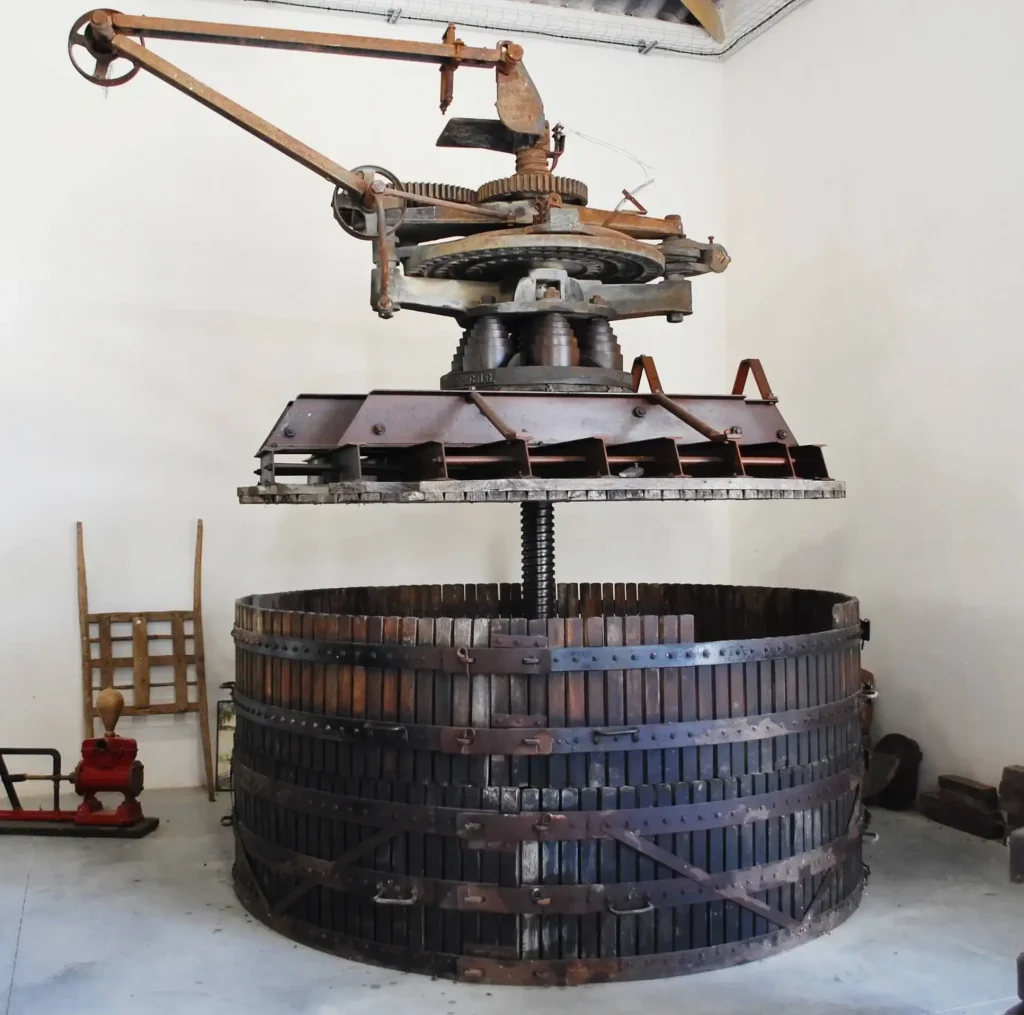
Industrial revolution meets winemaking
With the development of steam power and the first industrial revolution, the winemaking revolution wasn’t far behind. Steam-powered basket presses were the newest trend and became popular in the 19th century. They increased efficiency, speeded up the process, and reduced the amount of manual labor.
With the help of railroads, steam-powered presses became more common and could be found in almost every corner of winemaking regions. They were very popular also in regions like California and Australia, where winemaking was becoming a major industry.
Modern-day presses
The next big step in the evolution of the wine press came in the 20th century. The basket press got a huge makeover.
They added hydraulic and pneumatic machinery and the presses went from the vertical style of pressing into a horizontal style, where pressure could be applied from one or both sides, either by use of an airbag or bladder.
There are two main kinds of modern-day presses. With batch presses, you need to empty the pomace and reload the press, just like with the basket presses. And the others are known as continuous presses, where a belt or an Archimedes screw takes care, removes the pomace, and adds new grapes.
With modern-day technology, another advancement came into play in the winemaking industry. Presses that reduce the amount of air the must is exposed to, which we know can be a factor in spoilage. These presses are known as tank presses. It is even possible to go through the pressing process in a completely anaerobic environment, which is sometimes favored for white wines.
Wine pressing nowadays
With new technology and options winemaking is still an art form, that requires a lot of knowledge. Different advancements in the winemaking process and wine presses mean also a lot of possibilities for different nuances in wine.
Winemakers can use a variety of pressing techniques, such as whole-cluster pressing and cold pressing. There are now even machines that can remove stems from the grapes and then crush them. With all of this advancement, winemakers can achieve different flavor profiles and styles of wine.
But probably the most important part of the evolution of the wine press is that spoilage became a real rarity. And also the option of obtaining a standardized wine, with consistent flavor profiles.
You can read more about modern wine presses here. You might also be interested in our article about different types of presses which you can find here.
